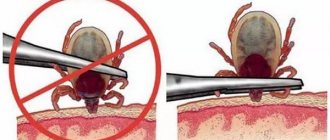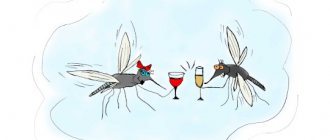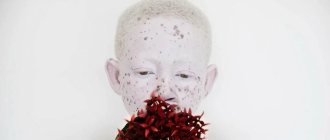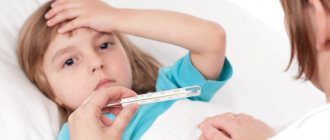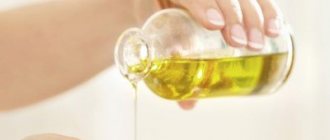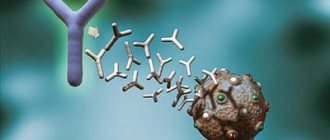Poisoning by snake venom is studied by such a branch of medicine as clinical toxicology, and not only doctors, but also those who work in the agricultural industry, are often outdoors or travel, should have information about the rules for carrying out emergency measures and methods for preventing snake bites.
Every year, about 2 million people suffer from snake bites, of which about 110-120 thousand people die. In Europe these are isolated cases, in the USA there are about 15 people, and in countries such as India, Brazil and Burma the figure is the highest in the world.
On the territory of Russia, the Republic of Belarus and Ukraine, there are about 11 species of poisonous snakes that are dangerous to people.
The most common families are: colubrids, slates, vipers and pitfalls.
Many snakes are not at all dangerous to people, are not aggressive and attack only when a person is deliberately aggressive. Their poison is secreted from a tooth, which is located deep in the mouth and affects only the victim located in the reptile’s mouth.
The situation is different with vipers and other types of poisonous snakes: they are always aggressive towards any human intrusion into their habitat.
To provoke an attack on their part, the mere presence of a person or animal is enough.
That is why in their habitats you should behave extremely carefully and immediately avoid any reptile you see. There are also cases when the moment of a snake bite remains unnoticed until the first signs of poisoning appear or traces of skin penetration are detected.
The Aspid family is represented on the territory of Russia by only one species - the Central Asian cobra, the Viper family - by various species of vipers, ephids and vipers, and the pit viper family - by the common and oriental copperhead.
The greatest likelihood of encountering viper, copperhead, sand ephemeral and some species of vipers (Caucasian, Radde, big-nosed) is observed in the Transcaucasus and Central Asia, and an encounter with the Central Asian cobra can occur in Turkmenistan, Tajikistan and southern Uzbekistan.
In addition to land poisonous snakes, there are also marine varieties of these reptiles dangerous to humans. You can meet them in the coastal waters of tropical seas.
Snake venom is a complex substance, which consists of a set of proteins and biologically active components that have an indirect or direct toxic effect on human systems and organs.
Typically, a snake attacks a person or animal only in self-defense, and about 70% of bites occur on the legs. The aggressiveness of snakes increases during the mating season or molting, but the fact of a snake bite does not always cause poisoning of the body. For example, when bitten by a viper, the snake does not release venom in 25% of cases, while coral snakes and cobras do so in about 50%.
The most severe poisoning by snake venom occurs during alcohol intoxication, high air temperature, in children, women, people with concomitant diseases, people with low body weight and when the poison is injected into the neck, head or large blood vessel.
And the most dangerous are the bites of large snakes.
The most dangerous bite for humans is the bite of the black mamba, which lives in the central, eastern and southern parts of the African continent. During an attack, this snake can reach speeds of up to 20 km per hour and death after its bite is observed in 95-100% of cases.
In this article we will introduce you to the symptoms of poisoning and bites of some poisonous snakes, methods of their prevention and methods of first aid and treatment.
Symptoms of snake bites and snake venom poisoning
The severity and nature of symptoms from snake bites can be characterized by some common features, since snake venoms contain the same components that have similar effects on the human body.
These toxins include the following:
- neurotoxin – affects and causes dysfunction of the nervous system;
- cholinesterase is an enzyme that causes disruption of the transmission of nerve impulses from nerves to muscles;
- cardiotoxin – affects and causes disorders in the functioning of the cardiovascular system;
- hemolysin - provokes the destruction of blood cells and red blood cells.
Symptoms that appear in a victim after a snake bite can be divided into:
- general - appear when bitten by any poisonous snake and are expressed with varying degrees of intensity;
- specific - characteristic of poisoning by a certain type of snake venom.
General symptoms
Common symptoms of snake bites and poisoning include:
Local signs. One or two triangular-shaped wounds are identified on the skin. They measure about 2-3 mm and are located on the same level. In the area of the bite, the following signs of inflammation are detected: redness, swelling and burning sensations and pain. The wounds may produce bloody discharge, and the skin surrounding the bite site may have hemorrhages or bluish spots.
General reactions. The victim's temperature rises (to high levels), muscle pain, nausea, vomiting and loose stools with blood appear. Renal and hepatic failure gradually increases.
Neurological disorders. The victim experiences a feeling of muscle weakness, confusion, numbness (especially in the bite area), headaches, decreased visual acuity, double vision, inability to focus, distortion of the facial muscles, drooping eyelids and impaired swallowing.
Cardiovascular disorders . The victim’s pulse quickens, blood pressure decreases or increases (sometimes to critical levels), breathing quickens and pain appears in the heart and chest.
The severity of symptoms of snake venom poisoning depends on many factors:
— The behavior of the victim after the bite. Running, fast movements, walking or panicking accelerate the rate at which the poison spreads throughout the body.
— Type of snake, its size and age. The most dangerous are the bites of rattlesnakes, adders and cobras, less so are the bites of snakes of the viper family, but they can also cause serious deviations and death (in 1% of cases). Poisoning from young or small snakes is less dangerous. In addition, the toxicity of the venom can also be influenced by the degree of fear of the snake before the attack: the more frightened and aggressive the snake is, the more toxic its venom becomes.
— Localization of the bite. Symptoms of poisoning develop more quickly when a bite is applied to the head, neck, torso and large blood vessels. When the lower extremities are affected, symptoms develop more slowly.
— Age and general health of the victim. Children, elderly people, women and people suffering from serious illnesses or under the influence of alcohol are more susceptible to snake venom toxins. In such cases, death can occur at lightning speed.
— The presence of pathogenic bacteria on the snake’s teeth. Wound infection can cause the development of severe purulent complications, necrotic processes and sepsis.
— High air temperature. A hot climate promotes faster blood flow through the vessels and the spread of poison.
All these factors contribute to the increase and progression of the general symptoms of snake venom poisoning. Depending on their combination and severity, the signs of poisoning can be aggravated by layering on each other or immediately causing the development of a shock reaction and the rapid onset of death of the victim.
Symptoms of a viper bite
The viper's venom contains enzymes that are toxic to the human body, such as:
- phospholipase;
- hyaluronidase.
Viper venom destroys the walls of capillaries and blood vessels, red blood cells, forms blood clots and causes circulatory disorders. Under its influence, the water-mineral balance and the activity of the cardiovascular system and liver are disrupted.
A victim of a viper bite experiences the following symptoms:
- 1 or 2 wounds from biting the skin with teeth, relatively mild pain, swelling that appears after 10-30 minutes, redness, burning, areas of hemorrhage, purple-bluish spots and areas of skin necrosis at the site of the bite;
- dizziness and headache;
- tachycardia;
- decrease in body temperature and fever as symptoms of poisoning increase;
- pallor;
- weakness;
- drowsiness;
- confusion or fainting;
- nausea;
- sweating;
- dyspnea;
- development of renal failure.
Symptoms of the bite of the Central Asian cobra and other snakes of the slate family
The venom of the Central Asian cobra includes:
- neurotoxin;
- cardiotoxin;
- hyaluronidase;
- phospholipase;
- cholinesterase.
A victim of a bite from a Central Asian cobra or other snakes from the slate family experiences the following symptoms:
- intense burning pain in the area where the skin is broken (decreases within a few hours);
- at the site of the bite, the color of the skin does not change, the skin becomes swollen, and bloody fluid is released from the wounds;
- when a limb is affected, its paralysis develops, which spreads upward, involving the muscles of the trunk and face;
- impaired movement of the eyeballs;
- swallowing disorder;
- hiccups;
- difficulty breathing;
- drooping eyelids and lower jaw;
- salivation;
- speech disorder;
- involuntary urination and defecation;
- rapid development of signs of intoxication: severe weakness, nausea, vomiting;
- severe anxiety;
- disturbance of consciousness;
- weakening of cardiac activity.
Death can occur 2-7 hours after the bite.
Symptoms of rattlesnake and pit snake bites
The venom of pit snakes and rattlesnakes contains:
- hemocoagulants, hemorrhagins and hemolysins - cause the destruction of red blood cells, promote vascular thrombosis and increase their permeability, subsequently their action leads to a decrease in blood clotting and the development of disseminated intravascular coagulation;
- cytotoxins - lead to damage to the kidneys, heart, liver and cause tissue necrosis in the bite area.
After being bitten by pit snakes (copperheads and copperheads) and rattlesnakes, teeth marks and scratches appear on the skin.
The victim experiences severe pain and a strong burning sensation at the site of the bite.
The temperature of the skin at the site of the bite increases.
Swelling at the site of the bite appears after 30-60 minutes and quickly progresses, spreading to the surrounding tissues, and after 6-8 hours, bullae (bubbles) with serous and bloody contents and multiple bruises appear on the skin, which merge and can form necrotic wounds.
In most cases, tissue necrosis develops from rattlesnake bites. And the peak manifestation of the poison’s effect is observed during the first 2-4 days.
The victim develops intoxication and hectic fever:
- the temperature rises to high numbers;
- chills appear;
- sweating;
- intoxication develops;
- nausea and vomiting appears;
- there is a risk of developing spontaneous bleeding from the stomach or intestines;
- a decrease in blood pressure and the development of shock are possible;
- the appearance of a rubbery, metallic or minty taste in the mouth (from rattlesnake bites).
When poisoned by rattlesnake venoms, victims experience changes in blood clotting: an increase in INR, a decrease in the number of platelets, and hypofibrinemia.
Blood coagulation disorders can lead to the development of DIC-like syndrome, manifested by hemorrhages on the skin, spontaneous bleeding, and the appearance of blood in the stool and urine.
Poisoning from diamondback rattlesnake and Mojave rattlesnake venoms may result in serious neurological impairment and signs of difficulty breathing.
When poisoned by the venoms of most North American snakes, victims exhibit signs of neuromuscular conduction disorders:
- muscle weakness;
- muscle twitching;
- paresthesia.
In some cases, victims experience a change in mental status.
Symptoms of coral adder bites
Coral adders are common in South and North America. The bites of these snakes pose a real threat to life, and about 7-8 people die from poisoning every year.
Without timely assistance, a person may die 20-24 hours after the bite from respiratory arrest and cardiac dysfunction caused by the action of neurotoxins and hemolysin.
With these snake bites, in most cases the pain and swelling of the skin is minimal, transient or completely absent, and such symptoms are often mistaken for a dry bite. This fact can be misleading for both the victim and doctors.
After a few hours, the victim begins to feel weak in the bitten limb, and after 12 hours, neuromuscular disorders begin to appear. These include the following symptoms:
- muscle weakness;
- enlarged axillary lymph nodes;
- cold sweat;
- headache;
- fear of light;
- pain and itching in the ears;
- sensations of roaring and crackling in the ears against the background of sudden night deafness;
- clicking in the ears when swallowing;
- black earwax;
- coldness of the lower extremities;
- rash on feet; sensations of coldness in the bones;
- stitching pain under nails;
- drowsiness;
- changes in consciousness;
- decreased visual acuity;
- fear of rain;
- euphoria or depression and fear;
- fear of loneliness;
- muscle flaccidity;
- cranial nerve palsy: ptosis, swallowing problems, drooling, drooping upper eyelids, blurred vision, double vision, speech, swallowing and breathing problems;
- stomach ache;
- pain when swallowing and a feeling of constriction in the throat;
- signs of sore throat;
- bad breath;
- nasal congestion;
- nosebleeds with sensations of pain in the nasal cavity;
- purulent and foul-smelling nasal discharge and the formation of yellow-green crusts (ozena) in the nasal cavity;
- diarrhea from cold water or debilitating diarrhea in weakened patients;
- the appearance of ulcers and erosions in the intestines and stomach
- rash on lips;
- fainting when trying to bend the body forward.
Such manifestations of poisoning by coral snake venom continue for 3-6 days. In the absence of timely medical care and artificial ventilation, the victim may die from respiratory failure and respiratory arrest.
What should you not do if you are bitten by a snake?
— Apply a tourniquet. Application of a tourniquet contributes to a sharp disruption of blood circulation in the limb and contributes to more severe tissue damage.
- Cauterize the bite site.
- Drink alcohol.
— Make incisions in places of swelling or bite to drain “poisoned blood.”
- Inject the bite site with adrenaline or local anesthetics.
- Be exposed to physical activity.
- Apply heat.
—Ice the affected leg or arm for a long time. The cold effect on the bite area should be local.
First aid tactics for a snake bite
Timely provision of first aid for a snake bite largely determines the future prognosis.
First aid for a snake bite is as follows:
Lay the victim in a horizontal position and calm him down. Once the snake is attached to the skin, it is removed immediately. If possible, the snake is identified or killed for further examination by a specialist.
Call an ambulance (if possible).
If the snake cannot be identified, the victim is observed. The absence of pain, burning and swelling in the bite area may indicate that the snake is non-venomous.
Remove clothing and jewelry from the affected area, which can impair circulation and worsen swelling.
If it is known for sure that the bitten snake is poisonous, then first aid measures begin immediately.
Urgent Care
Immobilize the affected limb (immobilize) using an improvised bandage or splint.
Suction of the venom should be carried out in the first 5-10 minutes after the bite is applied, since at a later date it is no longer so effective.
Timely implementation of this emergency measure helps remove about 50% of the poison from the body.
If possible, it is better to use suction or a rubber bulb for this procedure, and if they are not available, suction is performed with the mouth. To perform suction, you should grab the skin at the puncture site in a fold and lightly knead it (this will allow the puncture sites to open up better from the teeth). Use your teeth to grasp the areas of skin surrounding the wounds and suck out the poison while pressing on the skin. Saliva containing poison should be spat out immediately. The same actions should be performed for 20 minutes.
Disinfect the wound with hydrogen peroxide, chlorhexidine, a weak solution of potassium permanganate or brilliant green. It is better not to use alcohol or alcohol solutions to treat a wound.
Apply a loose bandage made of clean cloth or bandage to the wound and a moderately compressive bandage over the entire limb (the finger should freely penetrate under the surface of the bandage and not cause discomfort to the victim).
Apply cold to the bite site. When using ice, it should be removed every 5-7 minutes (to prevent tissue frostbite).
To reduce the symptoms of intoxication, the victim should drink as much as possible (up to 3-5 liters of drinking or alkaline mineral water per day), take vitamin K and C. Alkalinization of water can be done by preparing a soda solution: 1-2 teaspoons of soda per 1 liter water.
If possible, a dropper with a 5% glucose solution (400 ml) should be placed. To reduce blood pressure, you can use an intravenous infusion of 400 ml of Reopoliglucin.
Give the patient to take antihistamines (Diphenhydramine, Loratadine, Tavegil, Levocetirizine) or administer intramuscularly (1 ml of 1% solution of Diphenhydramine, Pipolfen or Suprastin).
Give the patient to take glucorticoid drugs (Dexamethasone - 2-4 mg/day, Prednisolone - 5 mg/day) or administer them intramuscularly (Prednisolone - 30-60 mg, Dexamethasone - 80 mg).
After a cobra bite, the victim may have trouble breathing. To stabilize it, you should bring a cotton swab moistened with ammonia to the patient’s nose.
If there are signs of respiratory and heart failure, the patient is administered Cordiamin, Ephedrine and Caffeine.
When breathing and cardiac activity stop, artificial respiration and indirect cardiac massage are performed.
Antidotes
In case of poisoning with snake venom, the administration of antidotes - antisnake serums - is indicated. Their administration is most effective in the first hours or days after the bite. Subsequently, if necessary, the administration of serums can be repeated.
Treatment for poisoning by snake venoms
Treatment of snake venom poisoning should be comprehensive and include symptomatic, detoxification and specific therapy. If necessary, resuscitation measures and artificial ventilation are carried out.
Treatment tactics are determined by the complexity of the clinical case and consist of the following measures:
To reduce the allergic reaction, the patient is advised to take desensitizing drugs and corticosteroid hormones. The duration of their use and dosage depend on the severity of the patient’s condition.
Detoxification therapy consists of infusion of solutions of sodium chloride, Refortan, glucose, Ringer, fresh frozen plasma and forced diuresis using diuretics (Trifas, Furosemide).
To eliminate the neurotoxic effects of the poison, anticholinesterase drugs are used - Proserin, Galantamine.
To prevent secondary infection and purulent complications, broad-spectrum antibiotics are used (Ceftim, Levofloxacin, Cefataxime, etc.).
To prevent hepatic-renal failure, the patient is prescribed Eufillin and hepatoprotectors (Hepadif, Essentiale, Berlition, etc.).
In case of severe poisoning (especially children), hemodialysis and hemosorption are indicated.
During treatment, monitoring of basic vital parameters and indicators of a general blood count, its biochemical parameters and a general urine test is always carried out.
Preventing snake bites
There are no specific ways to prevent poisonous snake bites.
To prevent snake bites, the following rules of conduct should be observed:
— When you see a snake, you should not perform actions that provoke the snake to attack: scream, tease, or make sudden movements.
— When entering a potential risk area, be sure to wear boots or high boots and clothing made of thick fabric.
- If you are walking through tall grass, then use a stick with which you can make sure that there is no snake.
— When walking in snake habitats, watch your step.
— When in places that are remote from cities and medical institutions, carry medications with antidotes.
— When staying outdoors for a long time in tents or sleeping bags, carefully choose a suitable place to sleep. It should be located on a hill with low vegetation, away from mountains and rocks.
— Be sure to check tents and sleeping bags for snakes every time you need to use them.
Source
Basics of life safety
Safety in the heat.
Sunburn In today's post we will share with you information about first aid for sunburn. Information to…
Safety in the heat. Tips for all occasions...
How to escape from the scorching sun and stuffiness - read our useful material. Air conditioners –…
Water safety. It is important to know
The sun, air and water, when used correctly, are a source of hardening and strengthening of health...
OBZD. Fire in the forest. What to do?
Warm weather conditions will be conducive to outdoor recreation. Unfortunately, people often forget about the...
Poisoning by mushrooms and poisonous plants
Mushrooms are representatives of a special living Kingdom that have nothing in common with plants. Their su...
OBZD. Annoying insects
High humidity, the rainy season, which visited us before the onset of persistent hot weather, geographical...
Safety in the forest
Warm weather conditions will be conducive to outdoor recreation. Unfortunately, people often forget about the...
Safety at a picnic
How to avoid getting sunburned, how to protect yourself from poisoning, how to protect yourself from ticks, how to be safe...
Fire in the country: from causes to rules...
A fire in a country house is, to put it mildly, an extremely undesirable situation. And yet, from time to time, dachas...
Attention! Cold weather causes hypothermia in the body
Every year, victims with various stages of frostbite are admitted to medical institutions. On the emb…
Car stuck on winter road
Hypothetically, this situation could happen to every motorist. Don't panic etc...
Ice: Safety Rules
With the onset of winter, street injuries more than doubled seasonally. I agree...
On the safe use of detergents and disinfectants in everyday life...
In modern conditions, people are constantly surrounded by aggressive chemicals. This n...
How to measure radiation from a cell phone flash
In connection with the installation of cellular base stations (BS) on the roofs of residential high-rise buildings and on the territory…
Storm wind
Wind is the horizontal movement of air flow parallel to the earth's surface, resulting...
On the website of the Federal Accreditation Agency anyone can check whether it complies…
Rosakkreditatsiya has opened a convenient digital platform in the format of a landing page. This tool calls…
Recommendations for the population on behavior in conditions of high smoke...
In case of increased smoke content in the atmospheric air caused by forest fires, in order to prevent…
Tick-borne infections. REMINDER
Currently, tick-borne infections (namely, infections transmitted by ixodid ticks) represent...
Recommendations for maintaining health during tourist trips
When traveling to foreign countries, especially with a hot and unusual climate, all tourists...
About recommendations on how to celebrate the New Year without harm...
The days of the winter holidays will be filled with only positive emotions if you follow these simple rules...
The carrier’s liability for causing harm to a passenger’s health…
A memo has been published on the official website of Rospotrebnadzor, which explains issues of responsibility...
RECOMMENDATIONS FOR CITIZENS: How to collect and cook mushrooms?
Every year in the Russian Federation, about 1 thousand victims of mushroom poisoning are registered, ...
Providing first aid for a snake bite
Poisonous snake bites pose a danger to human life and health. Despite the fact that these pr…
Sudden building collapse. Memo to the population
The collapse of a building, complete or partial, refers to emergency situations that result in...
How to protect yourself from winter injuries?
At this time of year, bruises and bone fractures (about 15%), and dislocations (about 10) predominate. Main reasons...
Ministry of Internal Affairs warns about financial scammers
In recent years, fraud using mobile communications and...
Snake bites: prevention, first aid, treatment
Poisoning by snake venom is studied by such a branch of medicine as clinical toxicology, and to master the in...
Be careful with mushrooms
Recently, cases of mushroom poisoning have become more frequent. Most poisonings are caused by the use of...
On the purchase of children's goods through cross-border online trading
Rules for the circulation on the market of products for children released into circulation on the territory of states - h...
Utility services remind you of safety rules for New Year...
The New Year and the long weekend that follows are a long-awaited event. Someone, of course, will leave to celebrate...
Viper bite
Since the main danger in our country comes from viper snakes, let us consider the issues of first aid and treatment using the example of a bite from a common viper.
The symptoms of this snake bite will be as follows.
- trace of a viper bite
At the site of the bite, two points from poisonous teeth are clearly visible. - In the first minutes after the bite, a slight pain, burning sensation is felt at the site of injury, swelling and redness of the skin develops.
- The swelling spreads quickly, causing dizziness and weakness.
- When an allergic reaction develops, swelling of the larynx occurs and breathing is difficult.
- General symptoms develop 20–40 minutes after the bite: blood pressure drops, heart rate increases, skin turns pale, nausea and vomiting are possible.
The consequence of a viper bite can be tissue necrosis at the site of the bite and the further development of necrosis and gangrene. If assistance is provided incorrectly, there is a serious danger of losing a bitten finger or even a limb.
Can a snake bite in water? Maybe, but, as a rule, vipers live quite far from the water and find themselves in it only when crossing to the other side. If you are bitten by a snake in the water, then most likely it is a snake. Another thing is snakes in tropical countries. In the warm waters of the Indian and Pacific basins there are many sea snakes, and all of them are poisonous to one degree or another.
What not to do if you are bitten by a snake
Is it possible to use a hemostatic tourniquet after a poisonous snake bite? This stereotype was formed on the basis of information about snake bites with nerve-paralytic venom - for example, cobras. In cases of viper and rattlesnake bites, applying a tourniquet is not only useless, but also extremely harmful. Firstly, the viper’s venom spreads very quickly through the bloodstream, and secondly, tissue injury will only worsen necrotic changes at the site of the bite.
What else should you not do if you are bitten by a snake:
- cauterize the bite site;
- drink alcohol;
- cut or incise the skin at the site of the bite.
If a general allergic reaction develops, the victim must be urgently taken to the hospital.
Providing first aid for a snake bite
What to do if bitten by a snake? The victim should be given first aid or self-help if there are no other people nearby. First aid for a snake bite includes the following:
- take measures to prevent the snake from biting again;
- if the bite is on the hand, remove rings, bracelets, etc., so as not to squeeze the tissue due to swelling;
- suck the blood from the wound for 15–20 minutes, periodically spitting out the contents;
- if the bite site is inaccessible for independent suction, then this can be done with a syringe, cutting off its nose;
- treat the wound with any antiseptic - alcohol, iodine, brilliant green;
- provide the victim with rest so that the poison does not spread quickly and the body has time to fight it;
- Drinking plenty of fluids will help detoxify the body.
Treatment
There is a specific antidote for snake bites - a medicinal serum obtained by hyperimmunizing horses. Each type of snake has its own serum. In Russia you can buy a serum against the venom of the common viper, sand viper and viper. It should be noted that a doctor should use the serum, since, being a biological product, it can cause allergic reactions, including anaphylactic shock.
In addition to administering an antidote serum, treatment of a snake bite is carried out symptomatically. It is necessary to drink plenty of fluids to speed up the elimination of poison by the kidneys. To prevent allergic reactions, take the tablet “Suprastin”, “Diphenhydramine” or another antihistamine. If necessary, the doctor prescribes cardiac support and painkillers.
Non-venomous snake bites
Sometimes a person is bitten by a non-venomous snake. Is there any cause for concern in this case? Yes, but only if you confuse a non-venomous snake with a poisonous one. In Russia, copperheads and grass snakes often cause suspicion.
It differs from the viper in its black color and orange spots on the back of the head and the absence of a zigzag stripe on the back. The snake can be confused with a viper of a rare black color. The head of the snake is oval, while that of the viper is oval-triangular. The snake's scales shine in the sun, while the viper's scales are matte. Snakes live mainly near water bodies. The bite is no longer so painful and does not cause severe swelling and hemorrhages.
The copperhead is not poisonous. This snake, up to 70 cm long, gray or brown in color, lives in almost the entire European part of Russia. Its saliva is toxic, but the copperhead's bite is dangerous only for its prey - lizards and other small vertebrates, since the snake's teeth are located in such a way that it is not able to bite a person.
Those who keep exotic snakes at home should be aware of boa constrictor bites. Boas are fairly peaceful snakes, but in case of danger they can attack and bite. The bites of large individuals can be quite painful, but not poisonous. The wound must be treated with an antiseptic to prevent infection - and the incident will remain without consequences.
What to do if a snake bites a child
If a child is bitten by a snake, do not panic. You need to calm the baby, take off your shoes or roll up your sleeves, depending on the location of the bite. Wash the bite site with laundry soap and treat with an antiseptic. Provide your baby with plenty of fluids, preferably something with a diuretic effect - black tea, herbal decoctions. Give an antihistamine to prevent an allergic reaction. If the child is not vaccinated against tetanus, then it is necessary to get an injection of anti-tetanus serum.
Try to remember the snake, call an ambulance and describe its appearance. If the child is under three years old, or the bite is in the neck or face area, seek medical help immediately, even if you are sure that the snake is non-venomous.
Let's summarize all of the above. A small number of poisonous snakes live on the territory of Russia; there are practically no deaths from their bites. The greatest danger is the bite of the common viper. Risk factors include childhood, cardiovascular diseases, allergies to snake venom, bites to the neck and head. First aid consists of sucking out the poison from the wound, disinfecting the bite site and taking the victim to the hospital, where he will be given an antidote - a specific serum. For several days you need to stay in bed and drink plenty of fluids to speed up the removal of toxins from the body. In severe cases, maintenance therapy may be needed - anti-shock, cardiovascular, anti-inflammatory. The effects of a snake bite usually go away within a week. Complications may include problems with the kidneys or infection of the wound at the site of the bite.
0
Prevention
- Don't provoke the snake! The snake is a peace-loving animal and will never attack itself.
- Don't step on the snake, be careful and watch your step.
- When you see a snake, do not scream or make sudden movements.
- When entering a potentially hazardous area, wear high boots and thick clothing.
- Before walking through thick, tall grass, make sure there are no snakes there. Use a stick or other available means.
- Choose a suitable place to stay overnight. It is better if it is a hill with sparse and low vegetation, away from rocks and holes.
- Don't leave tents open.
- Before getting into your sleeping bag, check for snakes.
Tarantula
The tarantula lives in steppe and desert areas and hunts at night. The idea of the tarantula as a deadly arthropod is greatly exaggerated. The bite of this type of spider extremely rarely leads to the death of a person and only with the development of a severe allergy in the form of anaphylactic shock. A tarantula can bite a person, but it can also defend itself in another way - by shedding thin hairs that stick into the skin:
| Tarantula bite | Tarantula hairs getting into your skin or eyes |
| Pain, burning, local swelling with reddish edges, which without appropriate treatment can burst with the formation of ulcers, headaches, general weakness | Pseudo-anaphylactic reaction: urticaria, angioedema, bronchospasm, drop in pressure |
